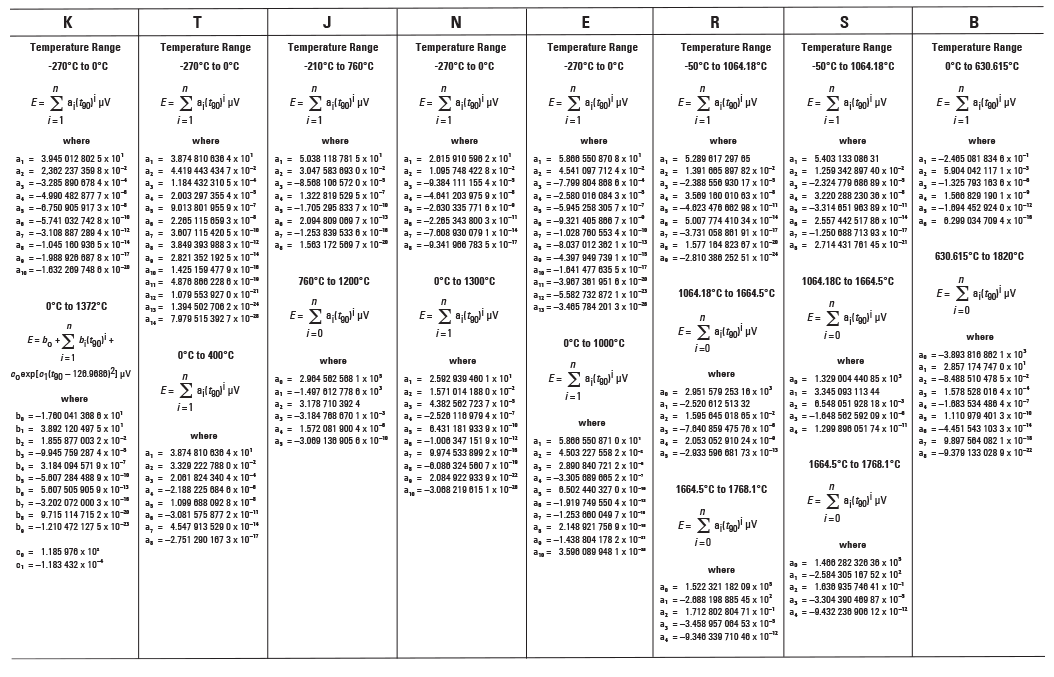Thermocouple Power Series Expansions and Polynomial Functions
For some advanced thermocouple applications — particularly where microprocessor-based instruments are used — simple look-up tables become impractical. In these cases, mathematical models based on power series expansions are used to describe the EMF/temperature relationship accurately.
- Polynomial Equations: IEC 60584-1 provides full polynomial functions that replicate standard reference tables, but these formulas can involve 4 to 14 terms with constants of up to 11 significant figures. They are highly accurate but impractical to simplify.
- Simplified Functions: The National Physical Laboratory (NPL) has created simplified polynomial functions (available in reports QU36 and QU46), offering forward and inverse conversions between EMF and temperature with an accuracy of approximately ±0.1°C.
- Practical Use:
- Digital thermometers
- Temperature controllers
- Data acquisition systems
- Other advanced instrumentation
These polynomial models are typically embedded in:
For computer applications the following expressions are given for the commonly used thermocouple conductor combinations. Resultant errors from their use will be less than the last significant digit as per the thermocouple reference tables.

Table 3.5: Expressions for the Standard Thermocouples According to IEC 60584-1

 France
France Germany
Germany Spain
Spain Netherlands
Netherlands Italy
Italy Hungary
Hungary United States
United States Australia
Australia